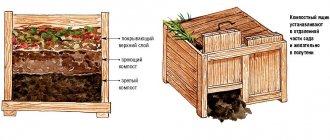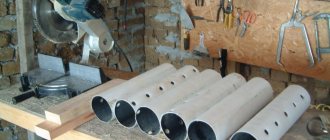We live in a time of food availability. On the shelves of markets and shops all year round you can find all kinds of vegetables and fruits. Despite this, many traditionally stock up for the winter. According to statistics, this is 80% of the population. Mostly families of 4-5 people.
Some vegetables are pickled or canned, and potatoes are stored in special boxes on the balcony, kitchen or cellar.
Unfortunately, not the entire supply of vegetables can be preserved. To keep them in good condition longer, storage conditions must be observed.
The safety of the fruit depends on the type of vegetable. Potatoes are the most capricious among them. Due to high humidity or temperature, the root crop sprouts, softens and rots. If the temperature, on the contrary, is too low, then the starch in the potatoes turns into sugar. The fruit has an unpleasant sweet taste. And when there is an excess of light, it changes its color from brown to green. This vegetable can no longer be eaten. But still, storing potatoes in winter is not a difficult process.
Preparing supplies for winter
To successfully store vegetable stocks on the balcony, care should be taken to properly prepare the crop for the winter season. Particular attention should be paid to potatoes, which will live on the city loggia for several months. There are some practical tips on how to store potatoes on the balcony in winter, following which you can always serve delicious potato dishes to the table. The main thing: early varieties of nightshades are not intended for wintering on a loggia - they quickly deteriorate and lose their taste.
Before sending potatoes for wintering, they must be carefully sorted and sorted.
- Potatoes intended for winter storage are harvested in dry, warm weather. Then thoroughly dry in the open air (protects from disease and rotting). Usually the process takes about 2 weeks. Do not dry tubers on iron or concrete.
- Sort and sort the tubers by size and quality. Separate damaged potatoes from healthy ones. Store separately.
- Thoroughly disinfect containers for storing vegetables (if not new ones). Use a mixture of baking soda, soap and hot water. When the wood is dry, treat with lime and copper sulfate (proportion 100 g per 10 l).
- Layers of straw prevent fogging and sprouting of potatoes on balconies.
- A little trick: you can prevent potatoes from rotting by sprinkling the tubers with chopped garlic or arranging the vegetables with rowan leaves.
How to preserve potatoes for a long time?
- The main condition for successful and long-term storage of potatoes is their selection upon purchase and sorting after it. Healthy tubers store well and are not susceptible to drying out or rotting.
- You should not store the “second bread” together with other assembled vegetables. The only ally of potatoes is beets. They can be put in a box together. Beets tend to absorb excess moisture.
- When sorting through the tubers, do not allow any soil stuck to the potatoes. Such an omission can lead to the development of mold fungi.
Only high-quality potatoes can be stored for a long time, so you need to be careful when purchasing and preparing potatoes.
We talked in detail about the secrets of storing potatoes in the cellar in winter here, and from this article you will learn about what conditions should be in the vegetable storage to avoid rotting and spoilage of the vegetable.
DIY storage
While the harvested potato crop is drying in the sun, the craftsmen have time to build a storage area for vegetables on the balcony. The advantage of containers made with your own hands is that the parameters of a homemade cellar can be easily “adjusted” to the size of the loggia and the box can be installed in a way that is beneficial for the residents. It is quite easy to make a container from boards or clapboard.
Insulate the potato box on the balcony with foam plastic and foil for thermal insulation. To avoid contact of vegetables with a metal or concrete floor, the bottom of the container should be equipped with a lower shelf. It will create the effect of an air cushion. A homemade vegetable cabinet can be vertical (standing) or horizontal. The second design option can be easily refined by covering the container with a blanket and decorating it with decorative pillows. The result is a cute balcony sofa, ready for use at any time of the year.
Vegetable drawer can be used as a sofa
If the loggia is not insulated, for more efficient harvest storage it is better to use a chamber with additional heating. It is easy to assemble it from two boxes of different sizes, seal the air cushion between them with polystyrene foam or construction foam. Pallet - polystyrene foam, sawdust, rags, cardboard.
The effect of additional heating is achieved using light bulbs. Turn on the light in the container for 4-5 hours a day. Such additional measures will allow you to perfectly preserve the tubers in severe frosts. Some craftsmen use a hair dryer instead of household lamps as a heat source.
A good option for wintering potatoes is an old refrigerator. Moreover, a non-working refrigerator can be easily converted into a balcony decoration element. To do this, it is worth modifying the refrigerator lid, for example, into an ottoman. As an option, paint the “white friend” with beautiful patterns.
Didn't you find any of the things described above in the house? No problem. Regular boxes (plastic/wooden) are sold in every hardware store. They are a good option as containers for storing vegetables on balconies. An ordinary cotton blanket will protect the crop from freezing, and wooden planks, a sheet of thick cardboard, or foam plastic will protect it from contact with concrete. There is no need to worry about additional ventilation.
How to store potatoes. I haven’t studied this issue particularly deeply, but I know that potatoes don’t like heat and don’t like frost. Therefore, the storage temperature should be about +2..+8 degrees. So, shortly before buying potatoes, I bought boards and bars to make a box. I didn’t calculate the amount of material in advance, but estimated it right in the store before purchasing. And I almost guessed right, because... There are very few boards left, and even those will be used for other purposes.
I also didn’t think about the design of the box, but my precious wife persuaded me to look at the information on the topic. After watching one single video instruction on YouTube, I made one conclusion for myself - the front wall of the box should be collapsible so that access to the potatoes lying on the bottom is convenient. At this point the preparation ended, and I began the process itself.
First of all, I sawed the required dimensions for the frame of the box.
Then he began to assemble the frame, connecting the bars using metal corners. In this photo, the frame is not on the side wall, as it might seem, but in the position in which the box will stand.
Assessing that the height was too high, I decided to make the box 20 cm lower. Here is the result.
The photograph shows that the bars are connected to each other by metal corners. Of course, it was possible to connect them simply with screws, but the corners allow you to achieve perfectly even angles and give additional rigidity to the structure.
I cover the back wall of the box with boards. I leave a distance of just over 1 cm between the boards for ventilation.
I place the box on the back wall and begin to plank the front side. 8 boards were needed for the sheathing. As you remember, I decided to make the front wall partially collapsible, so I screw the four bottom boards with screws, and the top four boards will be removable. To do this, I decided to make guides from aluminum corners. The corners are screwed to vertical bars in such a way that between the corner and the bar there is a distance slightly greater than the thickness of the board.
After this, I line the side walls and bottom of the box with boards.
I screw three smaller bars to the bottom of the box. These will be its legs, which provide better bottom ventilation and easier movement of the box.
I slide the top four boards into place. Because They are not fixed with screws like other boards; I put wooden cubes between them, which provide ventilation gaps between them. I'm trying on the boards for the top lid of the box - they are not screwed on yet.
From thinner bars I assemble a frame to which the hinges and boards of the box lid will be attached.
I connect the bars together with smaller metal corners.
I attach the frame to the drawer using a long furniture loop.
At this stage I had to make some adjustments to the design of the box. I planned that the lid would be the entire depth of the box and even prepared boards of the required size. But taking into account the placement of the frame and hinge, the design changed, and the lid boards had to be shortened. I screw the outer boards of the lid to the frame.
And then the rest of the boards, leaving small ventilation gaps between them.
You probably noticed that the sharp ends of the screws stick out in many places on the drawer. In order not to have to search for screws of different lengths, I used the same long screws, which I later cut with a grinder.
I'm starting to prepare the place to install the box. As I wrote earlier, I planned to install the box in a room near the garbage disposal. This room is locked with a key (all neighbors have keys). The temperature in this room in winter is above zero, but it is quite cool due to the cooling from the garbage disposal pipe. Neighbors store building materials left over from renovations and other things in this room. From my own experience I know that such things will probably not be needed in the future. I feel that over time this room will become cluttered and if I put the box in the far corner of the room, after a while it would be impossible to access it. So I chose a place near the door (the neighbors probably won’t like it, but what can you do?). First you need to clear the room.
Sacks of potatoes have been lying here for several days.
The box is in place. He fit right in.
To make it easier to store the potatoes, I removed the top boards. I felt the convenience of this design almost immediately.
The box is full. I don’t know how I got the sizes right, but four bags fit. I'm not sure that the fifth bag would fit completely.
Installed a loop for a padlock.
And finally, instead of wooden cubes between the boards, I came up with the idea of using screws screwed into the end of the board. It is very convenient to adjust the width of the ventilation slots.
I am sure that after reading this post, each of you will want to assemble your own potato box. I hope this instruction will help someone. I will be happy to answer any questions you may have.
And I will appreciate the economic effect and benefits of storing potatoes for the winter in the spring, when the potatoes are expected to run out. I will definitely write about this.
Many apartment owners consider the balcony as additional space for storing vegetables. The problem is that an insufficiently insulated balcony is sometimes unable to protect vegetables from freezing in winter.
A good way out of this difficult situation is to make an insulated potato box. We will talk about how to make it yourself.
Boxes for storing vegetables in the cellar. Cellar for storing vegetables - tips for arrangement
Preserving fresh vegetables until the new harvest is the main task of every owner of a summer cottage. Cellars for storing vegetables will help with this, which differ from ordinary basements in that it is necessary to create an optimal microclimate in them so that the food remains fresh and does not rot. In addition, the crop must be protected from rodents and diseases that may begin to develop at elevated temperatures or humidity.
From this article you will learn how to build a cellar for storing vegetables with your own hands and how to arrange a vegetable storage room inside. In addition, the article will provide examples of arranging boxes and containers for storing vegetables, and photos and
Cellar for storing vegetables: how to build and equip
There are several types of cellars for storing vegetables. The most popular are underground, above-ground and semi-buried.
If you are planning to arrange a room under a residential building or garage, an underground structure is suitable for you. Above-ground and semi-buried, as a rule, are separate buildings and are erected if the groundwater in the area is located too close to the surface.
Assessment of terrain and soil composition
Before building a cellar on a site, it is necessary to objectively assess the characteristics of the site, the composition of the soil and the level of groundwater, since not only the type of storage facility, but also the features of its construction will depend on this.
Assessing the groundwater level is one of the most important conditions for construction. If underground streams are located near the surface, it is not recommended to deepen the cellar too much, since in the spring the room will be flooded with water. In this case, it is better to give preference to ground storage.
Note: If groundwater is close, it is better to build a cellar on a natural hill, or a small mound, poured by hand. This will protect vegetables and preparations from moisture.
If the groundwater is low, a basement can be made under the house or garage. But in this case, it is necessary to evaluate the composition of the soil. This will determine what waterproofing materials and insulation materials will have to be used to create an optimal microclimate in the storage facility. The best is clay soil, which has a high density and does not allow moisture to pass into the storage facility. If your site has sandy soil, the hole dug for the basement needs to be further compacted, or, best of all, concreted.
Selection of optimal materials
The choice of materials for construction primarily relates to covering the floor and walls of the pit. The easiest way is to concrete the basement, but there are other options that do not require the purchase of additional materials (Figure 1).
Figure 1. Overview of popular materials for cellar construction
First of all, the cellar can be made earthen. But this design is only suitable for areas with dense soil. In this case, a hole is simply dug in the area, but the walls are made at a slight slope to prevent the soil from collapsing. The floor is thoroughly compacted, adding approximately 10-15 cm of broken brick or small crushed stone. The ceiling is reinforced with supports and covered with a clay mixture.
Note: The earthen version is best suited for storing potatoes. In such a basement, an optimal microclimate is created for the tubers, and they practically do not fade during the winter.
If you have the financial resources, the interior space can be lined with stone or brick. This design is more durable than an earthen or concrete cellar, and also makes it easy to create a microclimate suitable for fresh vegetables. However, the construction of such a basement requires certain skills in laying stone or brick.
Technologies and nuances of construction
Do-it-yourself basement construction is carried out using a certain technology. First, you need to choose the right site. Regardless of the type of cellar, a dry area on a small hill is most suitable for it. This will make it easier for you to protect the interior of the room from moisture and save on waterproofing the room (Figure 2).
If the cellar is located under the house, try to build it in an area where groundwater lies no more than half a meter from the base of the basement. If a suitable site is not found, and the storage facility must be built in a low-lying area, the floor of the storage facility is additionally compacted using a layer of sand and gravel.
Note: The optimal shape for a basement is square and rectangular. It is most convenient to place shelves, racks and containers in such a room.
Often the cellar is a separate structure, consisting of two parts: a storage facility buried in the ground and a burial chamber - a small house that performs a protective function. It can also be used to store tools and equipment.
Storing potatoes on the balcony in a box
When the crop is fully harvested, the owners have to place it somewhere. If in warm times this is not such a big problem, then with the onset of winter it is necessary to install an insulated box on the balcony. At least for apartment owners this is the best solution.
Before storing potatoes, they should be washed and thoroughly dried. The best place to dry potatoes is in the garage. In the meantime, until it dries, you can start making a box for storing vegetables.
Regular box for potatoes and vegetables
1. First of all, you need to determine what size box you will need. The parameters of such a storage facility depend on how much crop is harvested and how much free space the owner has.
2. To make a box for potatoes, it is better to use a beam with a section of 5x5 cm. It is needed to make the frame. Such a frame is sheathed with sheet materials, for example, fiberboard or plywood. For additional insulation of the box, you can use penoplex or polystyrene foam.
3. Potatoes and other vegetables are placed in the assembled box. The top of the crop must be covered with thermal insulation. For this purpose, penoplex is suitable, which is not able to emit harmful fumes. A good option is to create an insulated cover, to protect which you can use isolon or other insulation.
Heated box for potatoes and vegetables
The optimal way to store potatoes is considered to be one that involves preliminary insulation of the loggia. But this is quite difficult to do, and you still need to allocate storage space. Then at least a vegetable drawer equipped with additional heating will do. You can provide the necessary heating using a hairdryer or an incandescent lamp, the power of which does not exceed 60 W.
If a hairdryer is selected, then warm air from it to the potatoes should flow through the tubes. You can simplify the heating process if you also use an automatic thermostat. With its help it will be possible to maintain the temperature at the most favorable level. In addition, this option will reduce energy consumption and financial expenses of the owners.
The potato box itself is assembled in the same way as in the previously described case. Additionally, you need to take plastic tubes, the diameter of which is 5 cm. To prevent warm air from escaping from the storage container, you should additionally purchase penoplex. The work is carried out in the following order.
1. The frame is mounted using bars, which are fastened with corners.
2. To create the walls, the frame is sheathed with plywood. They can be secured using self-tapping screws. There must be holes in the wall through which warm air will flow.
3. The walls of the box are lined with slab insulation from the inside. If you also line the box with isolon with a layer of foil, the insulation will be more intense.
4. A tube with holes made at its end is placed in the hole on the wall of the box.
5. All electrical connections are checked for serviceability so that the operation of the hair dryer and communications is safe.
If the owner finds this method difficult, he can simply put an incandescent lamp in the potato box. It is first placed in a tin cylinder. To prevent the potatoes from burning, the lamp should be painted with dark paint. In extreme cold, a low-power incandescent lamp provides good insulation for vegetables.
Other ways to store potatoes on the balcony
1. Fill the box with sawdust. In this case, the matryoshka principle is used. That is, several boxes or barrels of different sizes are inserted into each other, and the remaining space between the walls is filled with sawdust.
2. Storing potatoes in an old refrigerator. This is also a fairly successful method, but only on the condition that the potatoes are periodically sorted. Otherwise, a few rotten vegetables will contaminate the rest of the crop.
In conclusion, we can give some useful advice. To constantly monitor the temperature in the box, you need to put a thermometer in it. If the temperature drops too low, potatoes and other vegetables must be moved indoors at least temporarily.
Video on how to make a potato storage box on the balcony
It’s not enough to grow a good harvest; the potatoes also need to be preserved. For those who live in their own home, this is not such a difficult task as for city dwellers who have to create suitable conditions in their apartment. We'll look at the best potato storage box designs that address this challenge.
Almost every private house has a basement adapted for storing vegetables and homemade preparations. In cases where the groundwater is located high enough, a separate bulk cellar is made, in which it is possible to maintain a constant temperature and humidity necessary for storing food supplies and planting material.
City residents have to use balconies, loggias, and garages to store vegetables and fruits. Sometimes, if conditions permit, special boxes are installed on the landing.
Regardless of where the potatoes will be stored, the following conditions must be met:
- Direct light, neither natural nor artificial, should not fall on root crops. Exposed potatoes turn green, and a toxic substance, solanine, is formed under the skin, which is dangerous to human and animal health. Such tubers are left as seed material, in which case the dangerous alkaloid will work as a fungicide (a remedy for fungal infections) and as an insecticide.
- The ambient temperature should be between +2 and +3°C, and the relative humidity should be 80–95%. At temperatures above the recommended temperature, potatoes wither and sprouts appear, and when the thermometer readings are negative, the fruits freeze slightly, becoming sweet. The process of converting starch into sugar occurs.
- It is necessary to provide ventilation so that the tubers are ventilated: this measure will prevent the spread of infections and fungal spores, which are always found in the ground and on the peel.
- The fruits must be dry and clean. The collected potatoes are cleaned of adhering soil and dried in the open air. Healthy tubers without visible signs of disease are stored well.
- If you put a layer of beets on top, it will absorb excess moisture that is released when storing potatoes. This is beneficial for both root vegetables. Before storing the crop, the potatoes should be sorted and sorted. Medium-sized tubers, mainly late and mid-late varieties, will survive until spring.
- During storage, potatoes must be sorted if signs of rotting appear: an unpleasant odor is felt, fruit flies (fruit flies) fly. Not only spoiled fruits are removed, but also those nearby that may be infected.
Storage features depending on the type of balcony
The presence or absence of glazing and heating, the climate of the region - all this affects the temperature on the balcony. And you need to select the type of box taking these factors into account.
Provided that the temperature on the balcony stays around 0–+6 °C all winter, occasionally rising or falling slightly, it is permissible to use a simple chest without additional insulation. Before expected frosts, it is enough to throw a rag over it to protect the supplies from freezing.
It is important to remember: if the box will be placed on an open balcony, you need to make sure that precipitation does not fall on it. You can build a canopy over it or cover it with plastic wrap. The latter is placed so that it does not block the ventilation holes in the chest.
If the balcony is glazed, but not heated, and there are regular frosts in the region, you will need a container with insulation without heating. In places with a harsh climate, you will have to make an insulated chest with heating.
Preparing the cellar for storing potatoes
Before using the cellar, the room should be cleaned and the walls should be whitewashed with a disinfectant composition based on quicklime. Disinfect boxes and bins with a solution of potassium permanganate (potassium permanganate).
The choice of container depends on the extent to which it is possible to maintain optimal storage conditions in a cellar, built under the house or free-standing. The cellar can be partially buried or completely above ground.
If in winter the cellar does not freeze, and in spring with the first rays of the sun the temperature does not rise, but remains within 2-3 degrees above zero, then root vegetables can be stored in wooden boxes or bins without additional thermal insulation.
A bin is a large box in the cellar, sometimes divided into compartments that are designed for storing vegetables. For potatoes, a lattice box is suitable, standing on a stand made of bricks or boards no lower than 20 cm; the sides of the bin should be no higher than 0.8–1.0 meters, so that it is convenient to collect tubers from the bottom. The shape and size of boxes, bins and pallets depend on the area of the cellar.
You can make boxes for storing potatoes with your own hands, it’s not difficult, you just need to know how to use a hacksaw, hammer or screwdriver.
First, a frame is assembled from 50x50 mm timber, fastening the parts together with metal corners. Therefore, the design is strong and has even right angles. Then the bottom and walls are made: slats are nailed to the frame or attached using self-tapping screws, leaving gaps of 2 to 4 cm between them.
Fig. 1 shows a drawing of a box designed to store 15–20 kg of potatoes; Fig. 2 – photo of such a box.
Fig.1 Fig. 2
When installing bins or boxes in storage, you need to follow the general rules to ensure free air circulation:
- wooden boxes or bins are best made from spruce or pine boards: resinous wood will last longer;
- the storage container must be at least 30 cm from the walls, and at least 10 cm from adjacent drawers; there must be a space of at least 10 cm between boxes placed one on top of the other;
- there should be a distance of at least 60–75 cm from the top row of drawers to the ceiling.
In cold winter, in order not to freeze the potatoes, you can cover the top layers with straw, burlap or old blankets and other warm things. It is very convenient if there is a heater in the cellar.
You can also store potatoes in nets and bags, placing them on wooden pallets so that the tubers do not touch the concrete floor and walls. Special plastic boxes designed for storing food with many ventilation holes are also suitable.
How to make a box from pallets for potatoes
Often, after purchasing building materials, unnecessary wooden pallets are left behind. Savvy craftsmen have learned to make various designs from them. A box of potato pallets can be lowered into the basement. The chest is not afraid of dampness, since durable, well-dried wood is used for its manufacture.
Stages of work:
- Take two pallets, untreated with chemicals.
- Using a nail puller, disassemble the structure.
It is important to keep all parts of the pallet intact
- Assemble the sidewalls of the structure from planks measuring 2x2 cm, 400 mm thick. Fasten short boards at intervals of 60 mm.
To make the finished box stable, install a crossbar obliquely on the reverse side.
- Fix wooden slats measuring 4x800x50 mm around the perimeter, thus defining the frame of the structure.
It is necessary to nail a cross-bar along the bottom of the box so that the chest does not fall apart
- Assembling retractable shelves: you need to use scraps of slats left after dismantling the sidewalls (400x37 mm, on each side).
All structural parts are connected with nails or screws
- Cover the finished product with a layer of odorless stain.
To make drawers easy to pull out, contacting surfaces are coated with wax.
A potato storage box made from pallets will fit in a small pantry or on an insulated balcony
Storing potatoes in urban environments
The townspeople are forced to store their harvest in their apartments. For this purpose they usually use a balcony, loggia or garage.
To store potatoes on a glazed balcony or loggia, you need a special insulated box that can protect the contents not only from cold, but also from heat.
The dimensions and shape depend on the amount of free space on the balcony. It is advisable that the volume of the box does not exceed 1 m³. A similar box can hold just over 300 kg of potatoes. It can be placed horizontally or vertically.
Potato storage box without heating
All homemade vegetable storage facilities intended for balconies and loggias are fundamentally similar - they are a structure of two containers inserted into one another, with a gap between the walls of 80–100 mm, filled with heat-insulating material. For insulation, sawdust, polystyrene foam, foil insulation, or simply improvised materials are used - old blankets and unnecessary warm clothes.
A wooden grate is placed at the bottom of the larger container so that air can move freely inside (this ensures constant ventilation), and it is equipped with a double insulated lid on hinges. A box for storing potatoes is made with an airtight seal made of foam rubber or porous rubber, protecting the internal space from the penetration of moisture, cold or too warm air.
The outer container is made in the form of a frame structure made of wooden beams 50x50 cm; the walls and bottom are made of plywood, chipboard, MDF or high-quality plastic. If the outer box is on an open balcony, it must be protected from water. For this purpose, the outer surface is coated with non-toxic paint or upholstered with galvanized sheet iron.
It is advisable to make the inner liner in contact with root vegetables from wood to avoid the release of foreign substances that can spoil the vegetables: deteriorate the quality and taste. If the box is decorated with clapboard or upholstered for the lid, it can turn into original furniture for the balcony (Fig. 3).
Fig 3.
Heated potato boxes
If you have to store potatoes on an open balcony or loggia, and in winter the ambient temperature drops below minus 10°C, it is better to make a heated box. Savvy summer residents have figured out how to maintain above-zero temperatures in the vegetable drawer. In one case, electric light bulbs with a power of no more than 15 W are used for heating. They are installed in a protective casing made of tin, painted with a heat-resistant dark varnish so that lighting does not damage the fruits, and are placed in the center of the container (Fig. 4).
Rice. 4
The second option is that the box is heated with warm air, which is blown by an electric hairdryer through a plastic pipe with holes laid below, in the inner container. It is necessary to install a grill over the pipe so that the potatoes do not cover the holes and interfere with the movement of heated air (Fig. 5).
Rice. 5
The electric wire comes to the box from the apartment, the heating is turned on, based on the readings of the thermometer. This process can be automated if a thermal relay with a sensor located inside the box is built into the electrical circuit. The relay will respond to changes in the air temperature inside and, if necessary, turn on the heating devices for a while until the specified temperature regime is established (Fig. 6).
Rice. 6
In the same way, you can regulate the temperature in the cellar and in the underground garage, where city residents often arrange storage for harvested vegetables.
Many vegetable growers who grow potatoes on their plots face problems storing the harvested crop. Potatoes, in this regard, are a rather capricious and demanding vegetable, which, in the absence of optimal storage conditions, quickly deteriorates, nullifying all the efforts of the vegetable grower. In this article we will tell you how to properly make a warm potato storage box with your own hands.
How to make a heated box
If the potato storage box will be located on an open balcony, it is necessary to consider a heating mechanism.
Stages of work:
- Determine the dimensions of the structure and make the frame of the future potato box from the bars. Connect all parts with metal furniture corners.
- Cover the walls and bottom of the structure with plywood.
- Make legs 5-10 cm high from thick timber.
- Cover the walls and bottom of the box with insulation, seal the joints with polyurethane foam.
- By analogy, make a smaller, inner box.
- In the upper part of the box, drill holes for the wire in opposite sides and install two ceramic sockets. Ceramics will not melt during prolonged use, which prevents fire
- Attach the thermostat to the outer wall of the potato box, lower the sensor itself inside, connect the wires from the lamps to it, and plug the device into a power outlet.
The thermostat is used from a factory, not a homemade one, to eliminate the possibility of device failure
- Sew the top end of the box with plywood.
- Making the lid. Cut a sheet of plywood that matches the size of the top surface of the box, glue the insulation to it, stepping back from the edges at a distance equal to the thickness of the box walls. Place the lid on the canopies and screw it to the box.
- If the lid does not close due to insulation, the material is slightly trimmed around the edges.
All electrical elements and wires must be carefully insulated
How to properly store potatoes?
There are several common ways to store harvested crops. A vegetable grower, for these purposes, can use cotton bags or store tubers in boxes made of plastic and lumber. It is believed that it is in boxes made by hand that it is possible to ensure the maximum duration of storage of the harvested crop.
The optimal temperature for storing tubers is the range from 2 to 7 degrees. In this case, the optimal humidity levels are 85-95 percent.
It should be remembered that when exposed to light, potatoes quickly turn green, spoil and sprout. It is prohibited to eat green potatoes, as they contain toxic substances (solanine).
If stored vegetables are provided with optimal conditions, potatoes will be able to retain all their taste for 6 to 8 months.
Storage rules
General requirements for long-term storage of potatoes:
- dark room without access to natural light;
- good ventilation;
- temperature from +2°С to +7°С;
- humidity up to 80%;
- potatoes are dried and sorted.
It is advisable to treat the storage room or container before storage.
Important! For long-term storage, only late varieties of potatoes are used. Early varieties are stored for no more than a few months.
If storage rules are not followed, there is a risk:
- infection of potatoes with fungal diseases;
- the tubers turn green;
- potato growth is activated;
- Due to low temperatures, a sweetish taste appears, and due to high temperatures, a crust forms.
If all storage rules are followed, the tubers will remain suitable for eating for as long as possible, retaining their taste and nutritional value.
Types of potato storage boxes
In specialized agricultural stores you can find various types of wooden and plastic boxes for storing potatoes and various vegetables. If in the recent past, vegetable growers were distrustful of plastic containers, today, with the advent of durable and environmentally friendly polymers, such boxes have become a real alternative to wooden structures.
When choosing plastic containers, it is necessary not only to pay attention to the specification of the polymer used, but also to evaluate the strength of the structure. All this data can be found in the specification for the container. We can only recommend that you choose a box for storing potatoes that can withstand at least 30 kilograms of weight and has ventilation holes on the bottom and in the walls, which will provide the potatoes with the necessary ventilation, which will prevent the appearance of rot in the vegetables.
And yet, it should be noted that purchased containers have one significant drawback - their high cost, so many summer residents are engaged in the manufacture of such containers for storing the harvest they have collected on their own. Wooden containers, which are durable and environmentally friendly, have not lost their relevance.
What tools and materials will be needed
Before you start building an insulated potato box, you need to prepare everything you need. Tools will always be found in the house of a thrifty owner, but consumables are selected individually.
Tools:
- saw;
- hammer;
- nail puller;
- drill-driver;
- level;
- meter.
Among the tools you may need are pliers, a pencil, and screwdrivers.
The amount of consumables is calculated depending on the dimensions of the product. It is necessary to stock up on timber, plywood or chipboard, nails, canopies, screws, metal corners, polystyrene foam, and roll insulation.
Requirements for vegetable storage boxes
To prevent rotting of potato tubers, gaps must be left between the wooden crossbars.
The design is equipped with a removable lid - the inside of the chest must be periodically ventilated. Small holes are drilled in the lid to keep the storage dry and ventilated.
The box must be protected from mold; before starting work, wooden materials are treated with an antiseptic primer and coated with emulsion paint.
Also, the following requirements are imposed on a homemade design:
- materials chosen are safe, without foreign odors, suitable for storing products;
- the chest should not let in daylight;
- breathability, heat saving.
The potato storage box should not be placed in a draft; its place is in the far corner of the balcony or cellar
Making potato boxes yourself
Making wooden boxes with your own hands is not difficult at all. Any amateur summer resident with minimal carpentry skills can cope with this task. It is especially easy to make such containers from wood if you plan to store potatoes in a cellar or garage pit.
You will need to make a box with your own hands from pine boards with dimensions of 40 by 20 centimeters or other sizes that suit you. To make such a box you will need plywood, OSB or chipboard. You can connect sheets of plywood and chipboard using bars measuring 5 by 5 centimeters. The timber is used as a frame and sheathed on both sides. Leave small gaps between the boards, which is necessary for good ventilation of vegetables in the boxes.
Let us remind you again - it is recommended to use coniferous wood, which will ensure the longest possible shelf life of the harvested crop. If you plan to store the harvested crop in a cold cellar, it would be a good idea to insulate the boxes you made. For these purposes, you can use penoplex, polystyrene foam or other heat-insulating material.
If the cellar and garage pit are not insulated or you plan to store the harvest on an unglazed balcony, then you will need to make a special insulated box with your own hands.
You will need to knock down two wooden boxes, one of which will be 10-15 centimeters smaller than the second. Sawdust is poured into the bottom of a large box, after which a second smaller box is inserted, and a heat insulator is poured into the cavity between the walls.
Do not forget about the need to make a lid, which should fit tightly to the walls, not allowing cold air to penetrate inside the container. This will allow you to make high-quality, heat-insulated containers in which potatoes can be stored even on an unglazed balcony. Making such warm boxes with your own hands is not difficult.
As thermal insulation materials, you can use not only sawdust, but also foam plastic, mineral wool and other available materials. Your task will be to properly insulate the box, which will make it easy to store potatoes for a long time even on a cold balcony.
It is possible to use ready-made plastic containers, which must be insulated with available materials. So, for example, you can line the walls of a plastic box with an old blanket and similar warm fabric. This homemade container is mostly intended for storing potatoes on a warm glass balcony.
How to make an insulated potato box with your own hands
If the balcony is not insulated or glazed, the potato storage box must be insulated. This can be done using thermal insulation.
Stages of work:
- Build two wooden boxes: a large one and a smaller one. If you insert a smaller chest into a larger one, the distance between the walls should be 5 cm.
- Insulation is placed into the resulting gap: polystyrene foam, polystyrene foam, foil backing for floor coverings.
- Cover the inside of the lid with any of the proposed insulating materials.
It is better to place the box on a wooden stand so that the potatoes do not freeze at the bottom
Assembling a storage facility for potatoes
- From the very beginning the frame is made. The bars can be screwed together using ordinary screws; for increased rigidity and smoother corners, metal corners can be used. Make the frame a little narrower than the place where the box will be installed, because the boards will still be screwed on top.
- Let's make the floor first - it can be made solid, then the garbage will not fall out from the inside, but will remain there. But if the box is high, it will be difficult to get it out of there, and there will be fewer ventilation holes. If you make it with space between the boards, then the garbage will spill onto the floor, but the reserves will breathe much better. For better ventilation, peculiar legs are screwed to the bottom of the box - long or short pieces of timber on which the box will stand.
For reference!
Please note that with each board screwed on, the structure becomes larger and slightly heavier. Collect it closer to the final location. Also calculate the load-bearing capacity of the balcony - a box of potatoes can weigh hundreds of kilograms. Be careful, do not create emergency situations!
- The wall covering begins. It is advisable to make the gap between the boards about 1 centimeter. This will not allow even the smallest potatoes to fall out of the box, and it will be well ventilated. We sew up the front wall about halfway, after which we screw the corners vertically onto the beams along the edges. Boards will be threaded into them, which can then simply be taken out and reached to the bottom of the box.
- We make the lid separately - the base of the timber should fit neatly into the upper hole and rest on the ledges of the boards screwed over it. Please note that the lid should be properly fixed when open in the place where the box will stand, so that you do not have to hold it and prop it up. Installed on hinges on the easy-to-access side.
- It is also worth taking care of the lighting in the place where the storage will be placed. It would be very good if the lid would be completely hinged and there would be a light bulb right above this place. If this is possible, you can use a good flashlight or a light bulb on an extension cord.
The above option is suitable for dry, warm and ventilated balconies. It is pointless to make such storage on completely open balconies - even despite good insulation, the potatoes will quickly become damp, freeze and rot, and the tree will not last even a couple of years. If the balcony is protected from external factors, but is simply cold, then the inside of the box can be insulated with polystyrene foam, mineral wool and wrapped with foil. For such purposes, it does not need to be made with ventilation gaps; they will only release heat. In such cases, potatoes need to be constantly sorted and their condition monitored.
What types of boxes are there?
When choosing a suitable design for storing potatoes, they take into account the conditions of the balcony itself: air temperature, type of double-glazed window (single glass, double, triple), drafts.
Before you start making a container for potatoes, determine the place where exactly the vegetable will be stored on the balcony, and the material from which the box will be made. The best breathable and affordable material is wood.
Heated
This type is suitable for a cold loggia (glazed with single glass). The box is equipped with electric heating . In order to save money, you can opt for a budget version and, instead of a flexible ribbon heating element, use products that are always at hand - a regular hair dryer or incandescent lamps.
Two lamps are placed in a tin cylinder, having previously been painted with dark paint. Incandescent lamps do not consume much electricity, unlike a noisy hair dryer.
Without heating
On a warm balcony, heating the box is not necessary. It is enough to cover its walls with insulation. The manufacturing process of such a design is simple and does not require large investments:
- Two rectangular containers are made from timber and slats so that one can fit into the other. The gap between the walls should be 8 cm. The bottom of the boxes is made of moisture-resistant plywood 8-10 mm thick.
- The surface of the products is coated with an antifungal composition for wood (“Snezh” or “Snezh Bio”).
- The space between the walls is filled with insulation - penoplex, sawdust, polystyrene foam or old batting. Experienced builders have recognized penoplex as the best insulation material. It does not absorb moisture at all and will reliably protect the potatoes from the cold.
Other
In addition to the usual homemade box, there are alternative solutions that you can use.
Refrigerated storage chamber
An old, used refrigerator is suitable as a winter cabinet for potatoes . It is freed from the refrigeration equipment (compressor and heat exchanger) and placed in a horizontal position with the door up.
The manufacturer provides sealed and warm walls in the refrigerator compartment. In them, between the plastic casing and the metal body, the entire space is filled with thermal insulation.
The only thing that remains is to tidy up the appearance: paint it, cover it with plastic panels or beautiful thick fabric. This storage chest can be unheated or heated.
Factory thermobox
The factory thermobox is a metal box in which heating elements are installed that can maintain a temperature of +2...+10°C.
The heating cabinet remains operational when the temperature drops to -35…-40°C. Some models have a manual temperature control system.
Flexible containers
Made of two-layer dense fabric, between the layers of which flexible heating elements are mounted. The maximum capacity of the “miracle bag” is 300 liters.
A soft thermal container is an economical solution for an unheated balcony.











